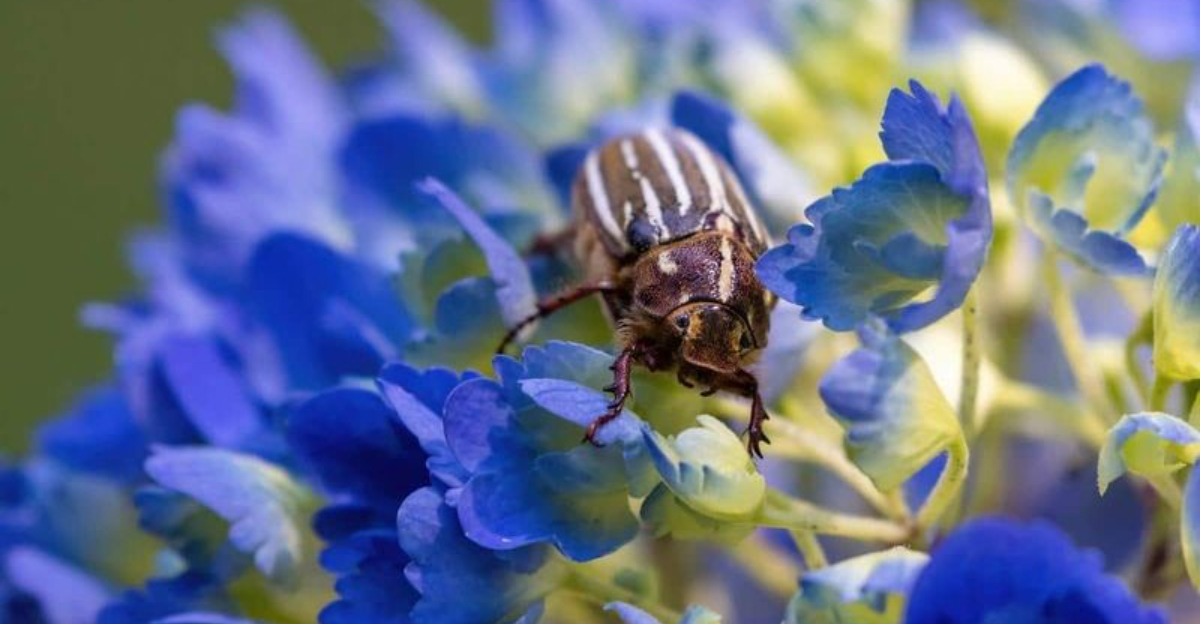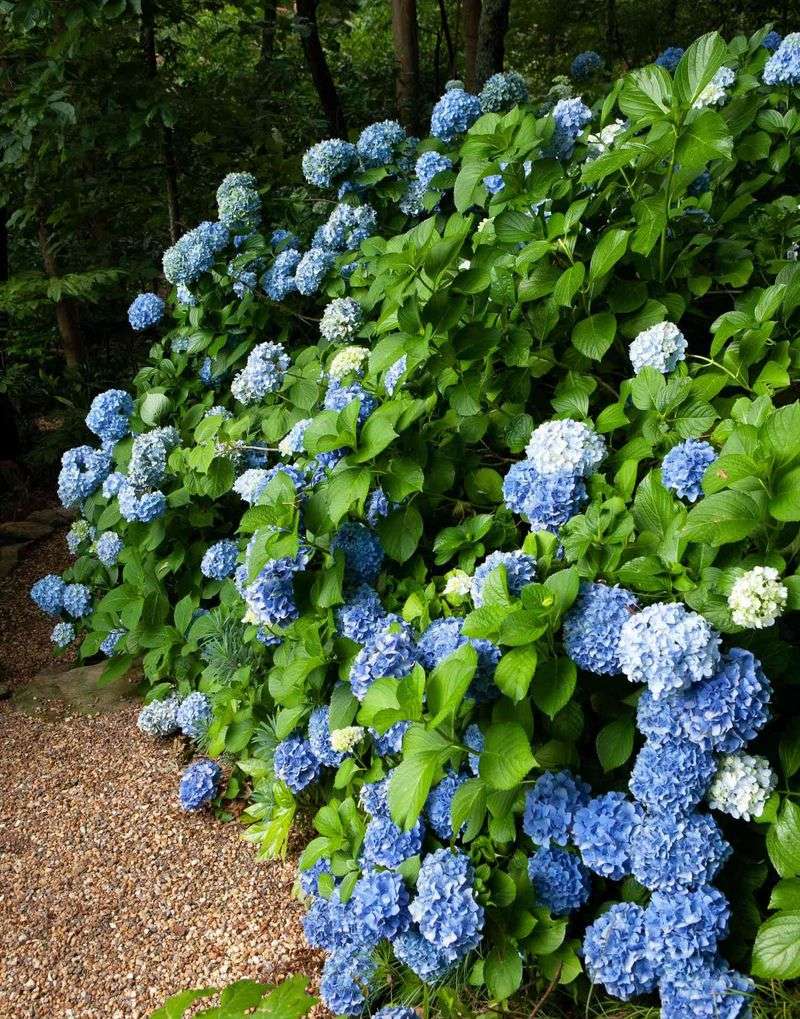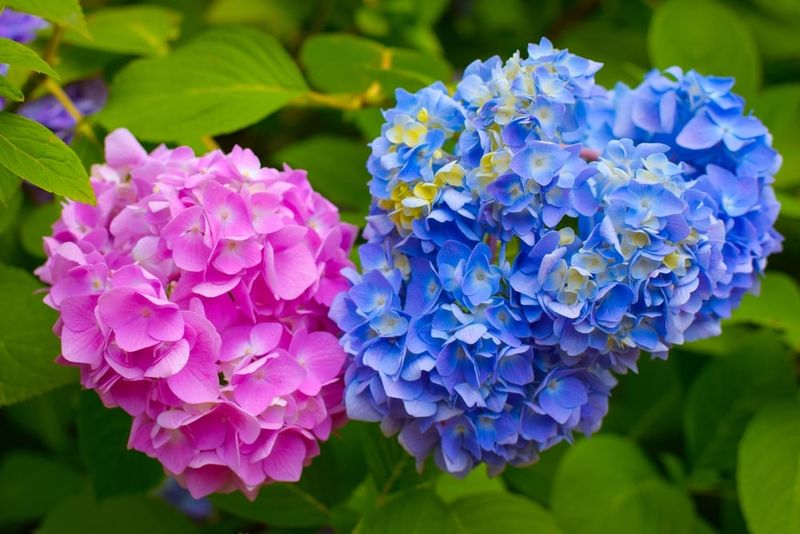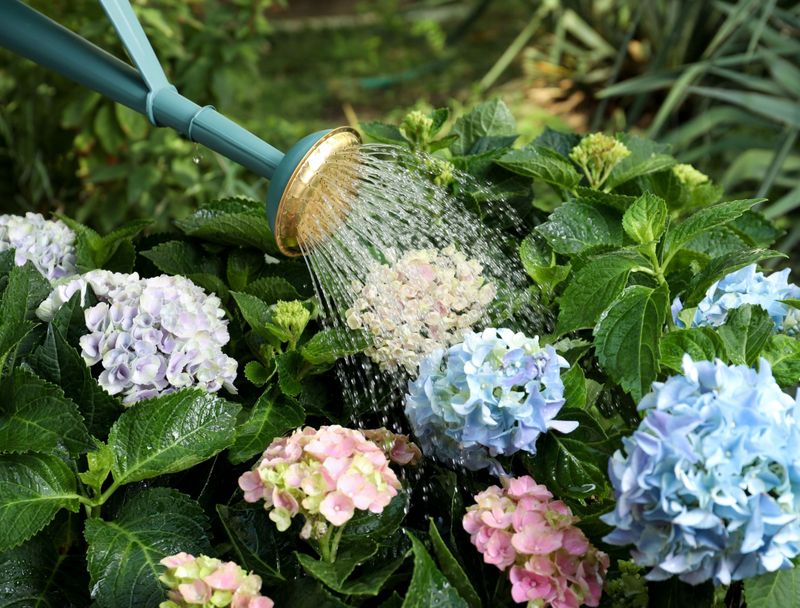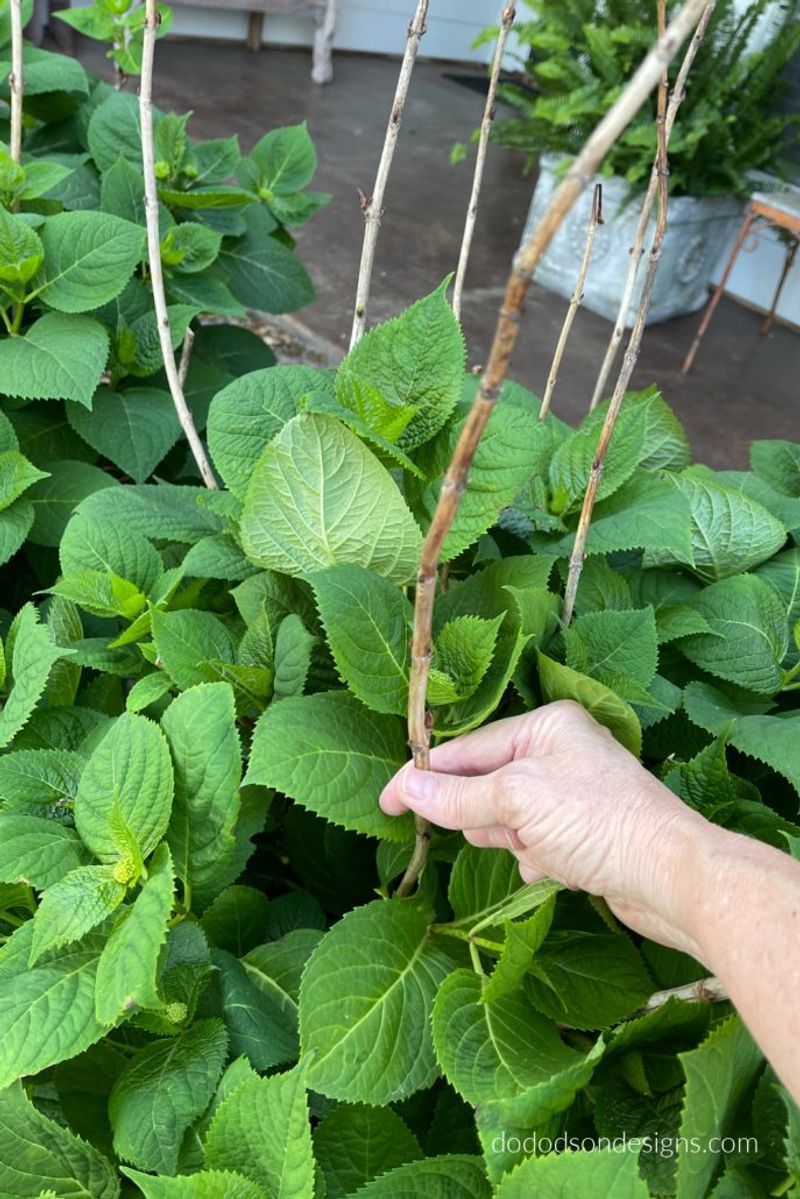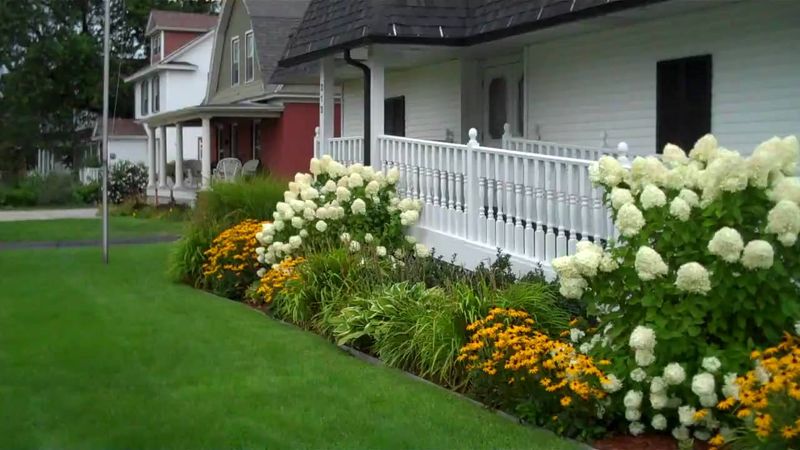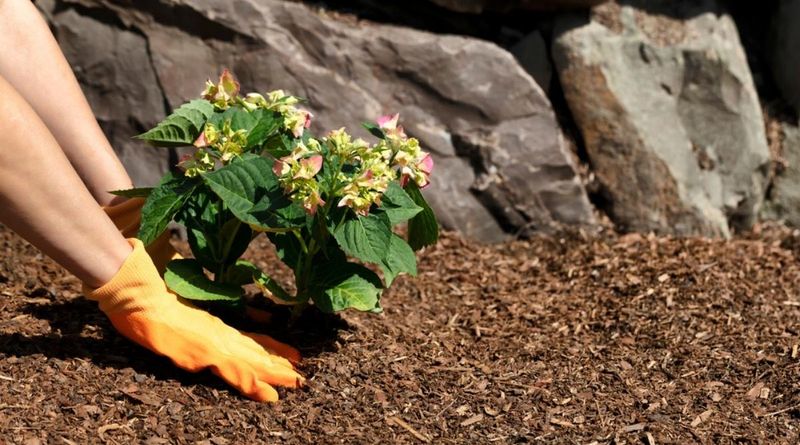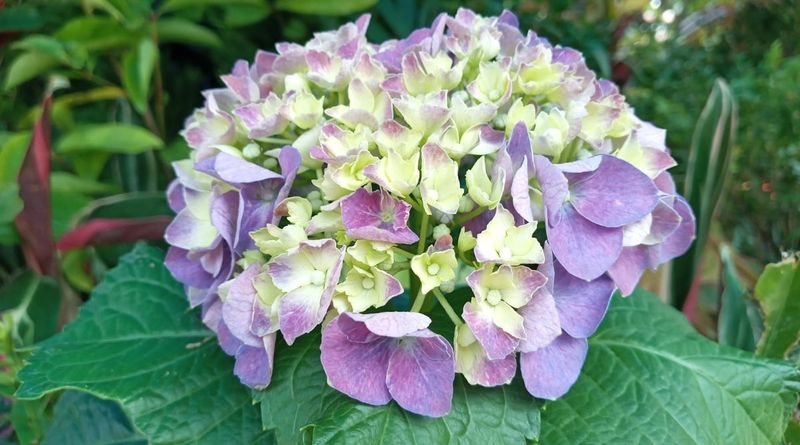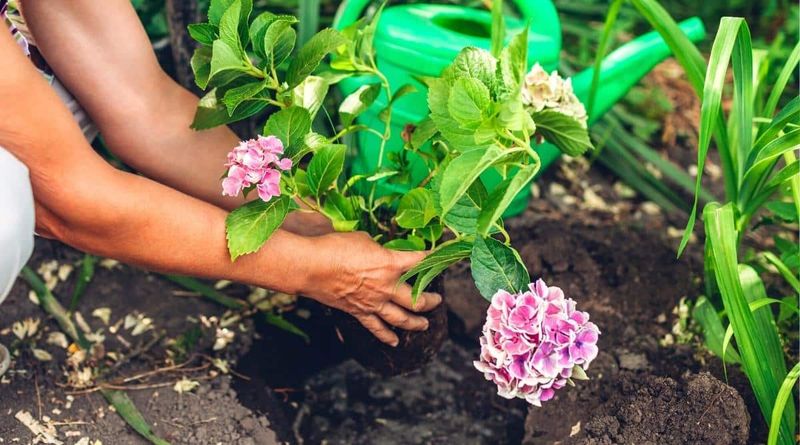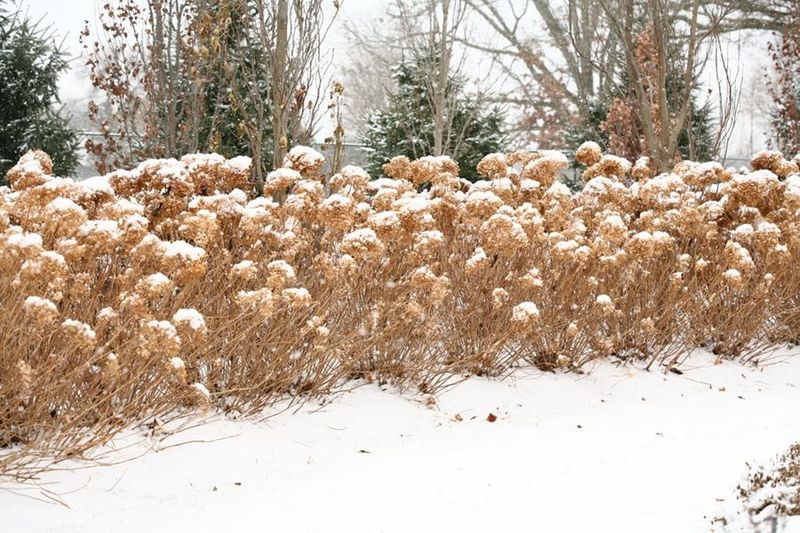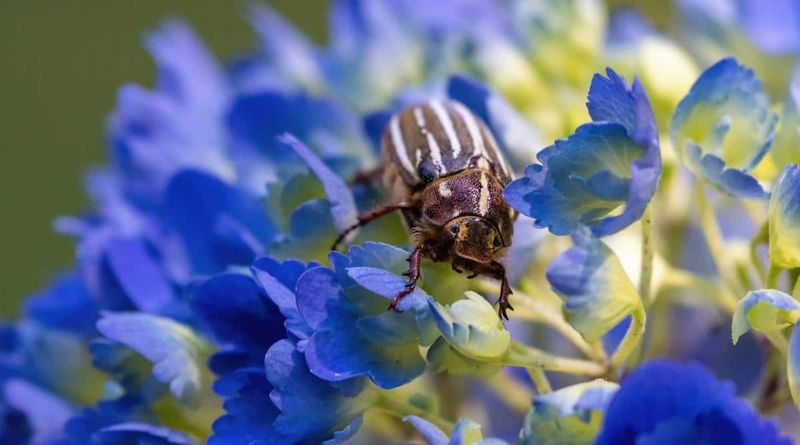Hydrangeas, with their lush blooms and vibrant colors, are a beloved choice for many gardeners. However, growing them successfully requires careful attention to specific needs and conditions.
In this article, we’ll explore ten common mistakes that might be affecting your hydrangea’s growth and vitality.
By understanding these pitfalls and taking actionable steps, you can ensure your hydrangeas thrive and brighten your garden. Read on to uncover the secrets to healthier, more beautiful hydrangeas.
1. Planting in the Wrong Sunlight
Hydrangeas flourish in partial shade, where they receive a gentle mix of sun and shade. Too much direct sunlight can scorch their delicate leaves, leading to brown edges and a stressed appearance.
Conversely, planting them in full shade can hinder their blooming potential, resulting in fewer flowers. Finding the right balance is key to healthy growth. Consider positioning them where morning sun meets afternoon shade.
Observe your planting area throughout the day to ensure optimal light. By tailoring the sunlight exposure, your hydrangeas will reward you with lush foliage and abundant blooms.
2. Ignoring Soil pH Requirements
The pH level of soil is more than a scientific detail; it can transform the appearance of your hydrangeas. Acidic soils lead to blue flowers, while alkaline conditions produce pink hues. Ignoring this can result in unexpected bloom colors.
Regularly testing soil pH lets you maintain the desired hue. Kits are available at garden centers to make this task straightforward.
Amend your soil with lime to raise pH or sulfur to lower it, adjusting as needed to achieve vibrant, true-to-type blooms. This understanding transforms your garden into a painter’s palette of colors.
3. Overwatering or Underwatering
Watering your hydrangeas requires a delicate balance. Overwatering can lead to root rot, leaving plants weak and discolored. On the other hand, underwatering causes wilt and sparse flowers. Consistency is key.
Monitor soil moisture by feeling the top inch; it should be moist but not soggy. Drip irrigation systems can provide steady moisture without overwhelming the roots. Adjust watering based on weather, ensuring hydration during dry spells.
By mastering this balance, your hydrangeas will thrive, displaying robust health and vibrant blooms.
4. Incorrect Pruning Timing
Pruning hydrangeas can be tricky, as improper timing or technique may cut away future blooms. Many varieties bloom on old wood, meaning last year’s growth. If pruned too late, you risk removing the buds.
Pruning should ideally occur immediately after blooming, allowing time for new growth. Use clean, sharp tools to avoid damaging the stems.
Understanding the specific type of hydrangea in your garden guides the pruning process, ensuring you don’t inadvertently hinder the next season’s display. Proper timing preserves the beauty of these cherished plants.
5. Poor Drainage
Hydrangeas dislike soggy feet; poor drainage leads to root suffocation and fungal diseases. Ensure that the soil drains well by incorporating organic matter like compost. Raised beds or mounds can improve drainage in heavy soil.
Observe your garden after rain to see if water pools around the plants. If so, consider amending the soil or relocating the hydrangeas.
By prioritizing drainage, you create a healthier environment where hydrangeas can access water and nutrients without being overwhelmed by excess moisture, fostering robust growth and resilience.
6. Lack of Mulching
Mulching is a vital step in hydrangea care, providing numerous benefits. It helps retain soil moisture, regulate temperature, and suppress weeds. Skipping this step leaves plants vulnerable to stress.
Apply a 2-3 inch layer of organic mulch, like shredded bark or pine needles, around the base of the plants. Replenish as needed to maintain effectiveness.
Mulching not only enhances the plants’ health but also adds a neat, finished look to your garden. Embrace this simple practice to support your hydrangeas’ well-being and aesthetics.
7. Improper Fertilization
Hydrangeas appreciate balanced nutrition, but improper fertilization can lead to issues. Too much nitrogen results in lush foliage but few flowers. Conversely, insufficient nutrients can stunt growth.
Choose a fertilizer specifically for hydrangeas, applying it in spring when growth begins. Follow package instructions for proper amounts. Regular feeding supports vibrant blooms and healthy plants, but moderation is essential.
Over-fertilization can harm rather than help. By understanding your plants’ nutritional needs, you enhance their beauty and vitality.
8. Inadequate Transplanting Practices
Transplanting hydrangeas requires gentle handling to avoid shock. Moving them during extreme weather, like heatwaves or frosts, can stress the plant. Prepare the new site in advance, with well-draining soil and adequate space.
Water the plant thoroughly before relocating, and prune if necessary to balance the root loss. Once transplanted, water consistently and provide shade if needed to ease the transition.
With care, your hydrangeas will settle into their new home with minimal disruption to their growth and flowering.
9. Neglecting Winter Protection
In colder climates, hydrangeas benefit from winter protection to survive freeze-thaw cycles. Without it, roots may be damaged, affecting growth come spring.
Apply a thick layer of mulch around the roots and consider using burlap or horticultural fleece for additional cover. Focus on insulating the soil rather than the plant.
By protecting your hydrangeas through winter, you ensure they emerge healthy and ready to bloom. This care pays off with vibrant spring growth and resilience against harsh weather.
10. Overlooking Pest and Disease Control
Vigilance against pests and diseases is crucial for healthy hydrangeas. Common issues include aphids, spider mites, and powdery mildew, which can damage leaves and hinder blooms. Regular inspection helps catch problems early.
Remove affected leaves and consider organic treatments or beneficial insects to control pests. Implementing a proactive pest management strategy keeps your plants thriving.
Healthy plants are more resilient to infestations, ensuring continued beauty and vigor. By staying attentive, you protect your hydrangeas from potential threats.
